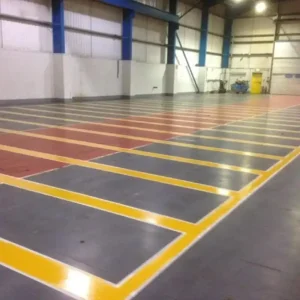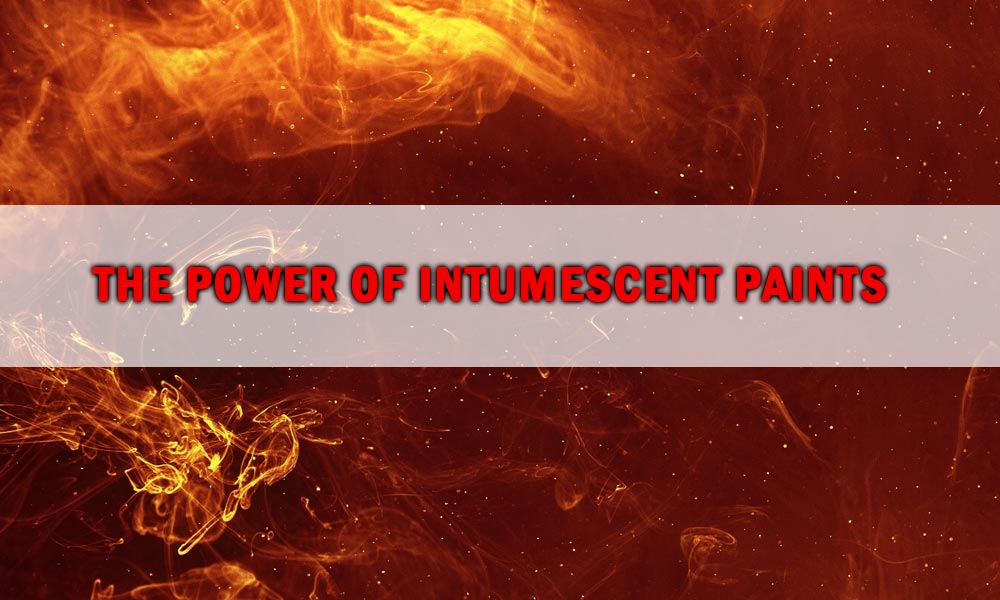All Blogs, Priming and Protecting
The Power of Intumescent Paints: A Look at How Fire Paints Can Protect Your Building from Fires
Fire Paint / Intumescent Paint
Fire Paint, as a building owner or contractor should be one of your top priorities is ensuring the safety of the occupants. One of the most devastating events that can occur is a fire outbreak.
The consequences of a fire outbreak in a building can be catastrophic, including loss of life, property damage, and business interruption. That’s why it’s crucial to take proactive measures to protect your building from fire. One of the most effective ways to do this is by using intumescent paint. In this article, we’ll take a closer look at what intumescent paint is, how it works, and why it’s an essential tool in fire protection.
Introduction to Intumescent Paint
Intumescent paint, also known as fire retardant paint, is a type of coating that expands when exposed to high temperatures, forming a thick, protective layer of insulation. This expansion occurs due to the presence of special chemicals in the paint that react to heat. The result is a thick, foam-like coating that protects the surface from heat and flames. Intumescent paint is commonly used in building construction as a passive fire protection measure.
Understanding Fire Paints and Their Importance
Fire paints are specialized coatings designed to provide a protective layer against fire. They are an essential component of fire protection systems in buildings. Fire paints work by providing a barrier between the fire and the material they are applied to. This barrier prevents the fire from spreading and gives occupants more time to evacuate the building.
Intumescent paint is a type of fire paint that provides an additional layer of protection against fire. In addition to creating a barrier, it also expands to create a thick layer of insulation, preventing the spread of flames and reducing the heat generated by the fire.
How Intumescent Paint Works
Intumescent paint works by expanding when exposed to high temperatures. The paint contains special chemicals that react to heat, causing the paint to bubble and expand. As the paint expands, it forms a thick, foam-like layer that insulates the surface from heat and flames.
The thickness of the expanded layer depends on the type of intumescent paint used and the duration and intensity of the fire. The thicker the layer, the more protection it provides against the fire. The expanded layer also helps to reduce the amount of heat generated by the fire, making it easier for firefighters to control the fire.
Benefits of Using Intumescent Paint
There are several benefits to using intumescent paint as a fire protection measure. These include:
Improved Fire Resistance
Intumescent paint provides an additional layer of protection against fire, making it more difficult for flames to spread and reducing the amount of heat generated by the fire.
Easy Application
Intumescent paint can be applied to a wide range of surfaces, including steel, concrete, and wood. The paint can be sprayed or brushed on, making it easy to apply.
Durability
Intumescent paint is highly durable and can last for several years without needing to be reapplied.
Aesthetically Pleasing
Intumescent paint can be applied in a range of colors, making it easy to match the paint to the aesthetics of the building.
Intumescent Painting Process
The process of applying intumescent paint involves several steps. These include:
Surface Preparation
The surface to be painted must be properly cleaned and prepared before the paint can be applied. This includes removing any dirt, debris, or rust from the surface.
Primer Application
A primer is applied to the surface to improve the adhesion of the intumescent paint.
Intumescent Paint Application
The intumescent paint is then applied to the surface, typically in several coats. The thickness of the paint depends on the level of fire protection required.
Topcoat Application
A topcoat is applied to the surface to protect the intumescent paint from damage and to provide a finished look.
Types of Fire Paint / Intumescent Paint
There are two main types of intumescent paint: water-based and solvent-based. Water-based intumescent paint is more environmentally friendly and easier to clean up than solvent-based paint. Solvent-based intumescent paint is more durable and provides better protection against fire.
Intumescent Paint Application to Steel Structures
Intumescent paint is commonly used to protect steel structures from fire. When applied to steel, intumescent paint expands when exposed to high temperatures, forming a thick layer of insulation that protects the steel from heat and flames. Intumescent paint can be applied to both interior and exterior steel structures, making it an effective tool for fire protection in industrial and commercial buildings.
Fire Paint for Wood Structures
Intumescent paint can also be used to protect wood structures from fire. Fireproofing paint for wood contains special chemicals that react to heat, creating a protective layer that prevents the spread of flames. Fireproofing paint for wood is commonly used in residential and commercial buildings to protect wooden structures from fire.
Intumescent Paint vs. Traditional Fireproofing Methods
Intumescent paint provides several advantages over traditional fireproofing methods, such as fire-resistant coatings and fire-resistant boards. Intumescent paint is easier to apply, more aesthetically pleasing, and provides better fire protection. Traditional fireproofing methods can also be more expensive and less durable than intumescent paint.
Cost Considerations
The cost of intumescent painting varies depending on several factors, including the size of the surface area to be painted, the type of intumescent paint used, and the level of fire protection required. However, the cost of intumescent painting is generally less than the cost of repairing fire damage in the event of a fire outbreak.
Maintenance
Intumescent paint requires regular maintenance to ensure that it continues to provide effective fire protection. This includes regular inspections to check for any signs of damage or wear and tear, as well as regular cleaning to remove any dirt or debris from the surface.
Common Misconceptions About Fire Paint / Intumescent Paint
There are several common misconceptions about intumescent paint, including:
Intumescent paint is only needed in high-risk buildings.
Intumescent paint should be used in all buildings, regardless of the level of risk.
Intumescent paint is only necessary for steel structures.
Intumescent paint can be used to protect a range of surfaces, including wood and concrete.
Intumescent paint is expensive.
While the cost of intumescent paint varies, it is generally less expensive than the cost of repairing fire damage.
Conclusion
Intumescent paint is a powerful tool in fire protection. It provides an additional layer of protection against fire, making it more difficult for flames to spread and reducing the amount of heat generated by the fire. Intumescent paint is easy to apply, aesthetically pleasing, and provides better fire protection than traditional fireproofing methods. By using intumescent paint, building owners and contractors can take proactive measures to protect their buildings from fire and ensure the safety of their occupants.
Contacting us is easy!
Email: sales@palatinepaints.co.uk
Call Us: 01942 884 122
Contact form: https://www.palatinepaints.co.uk/contact-us
Live Chat Service: Press the small blue icon at the bottom left of your screen.

































